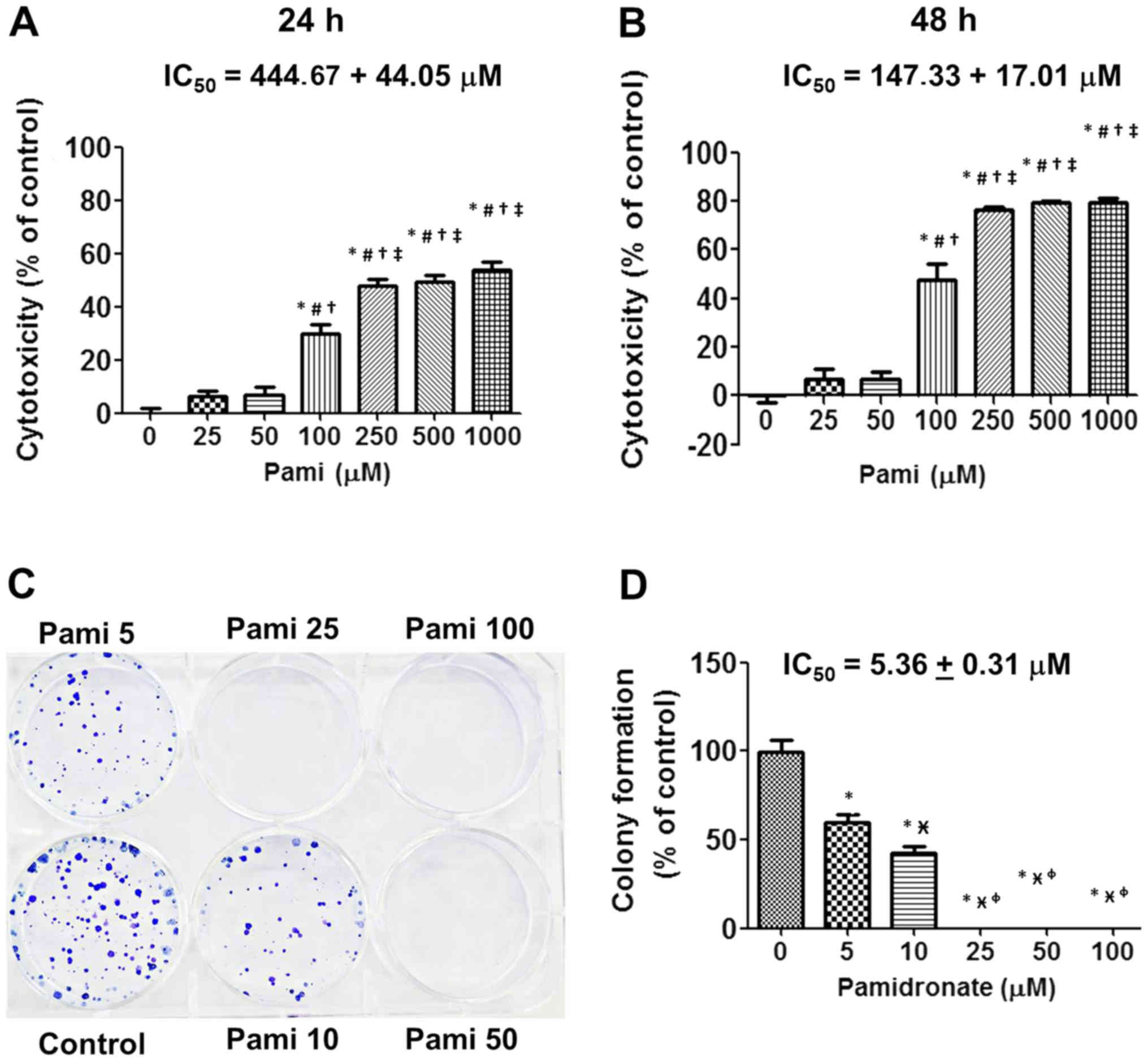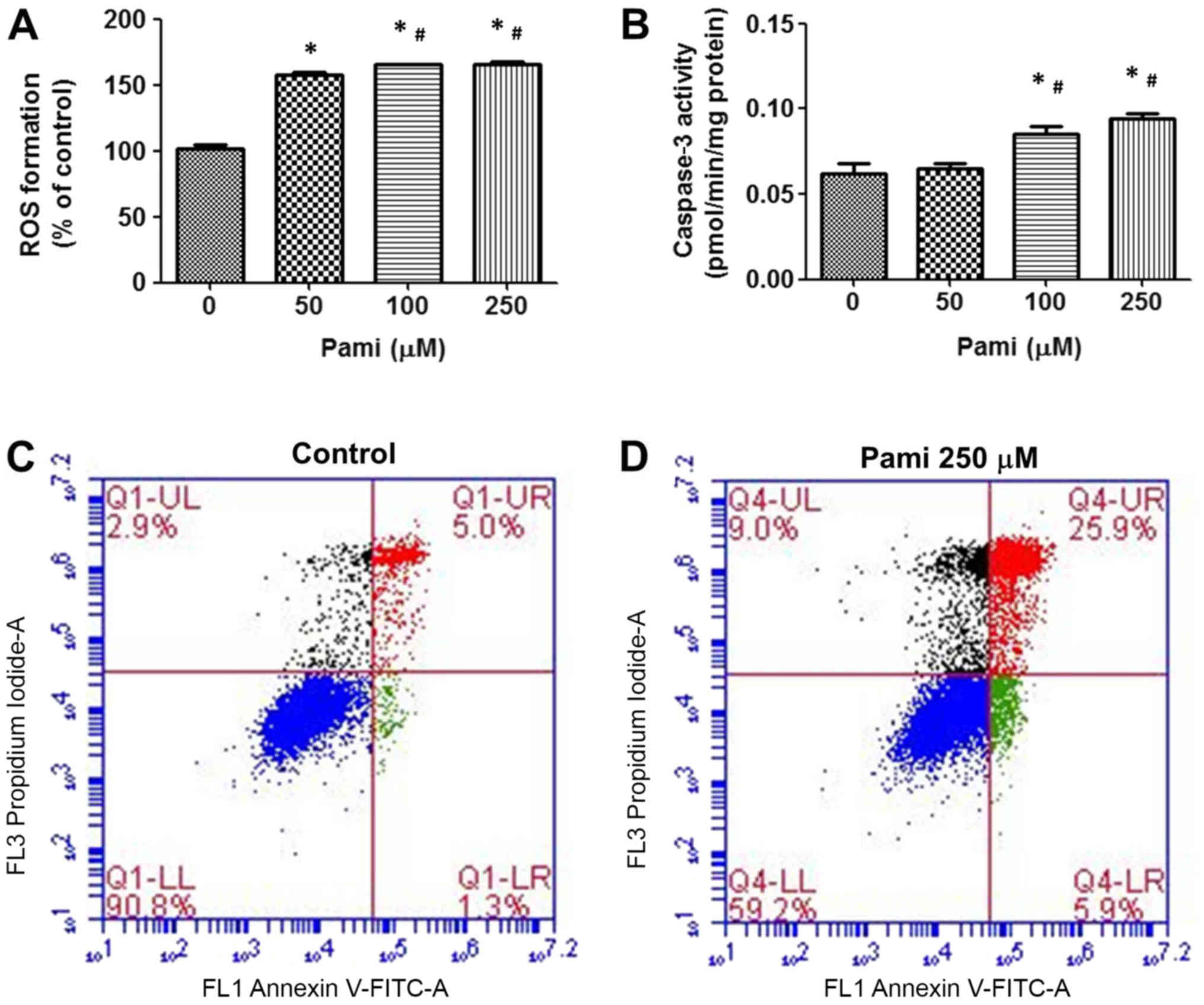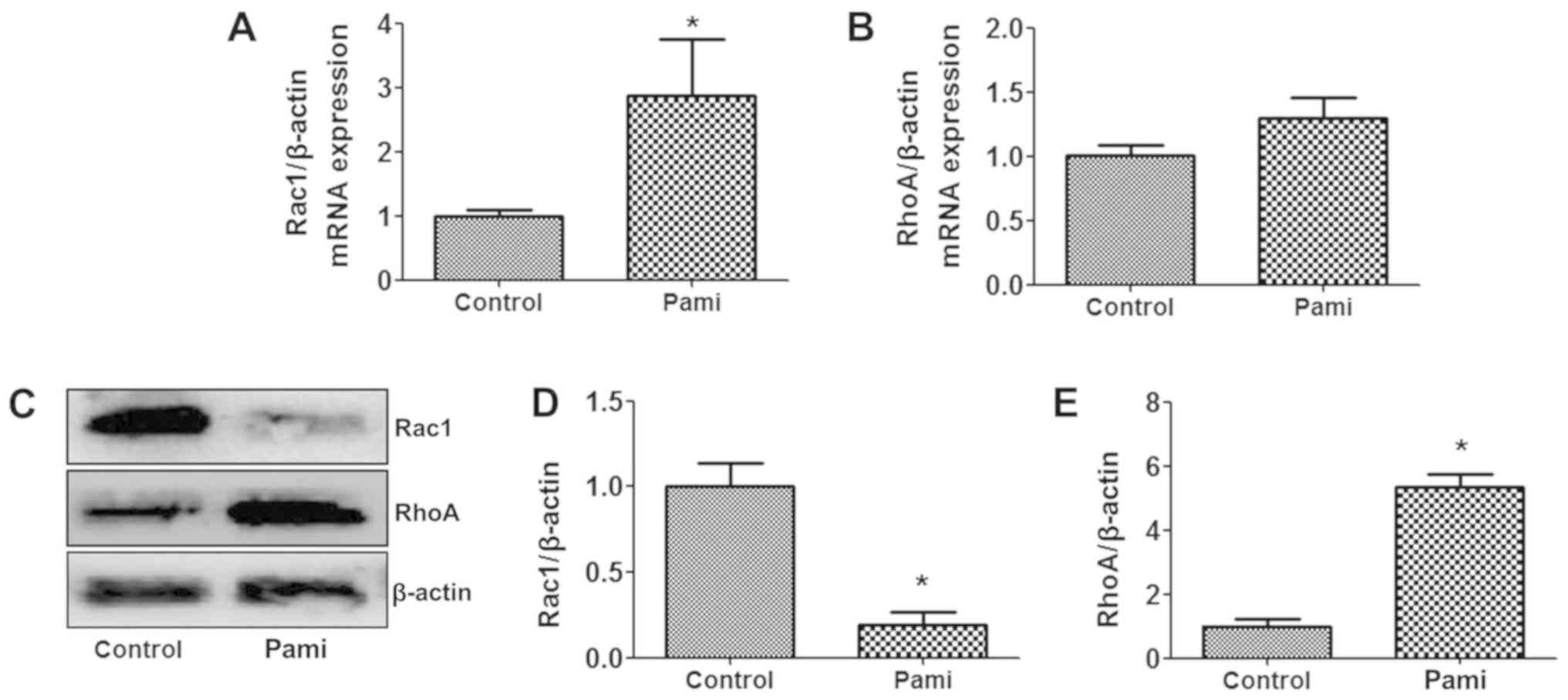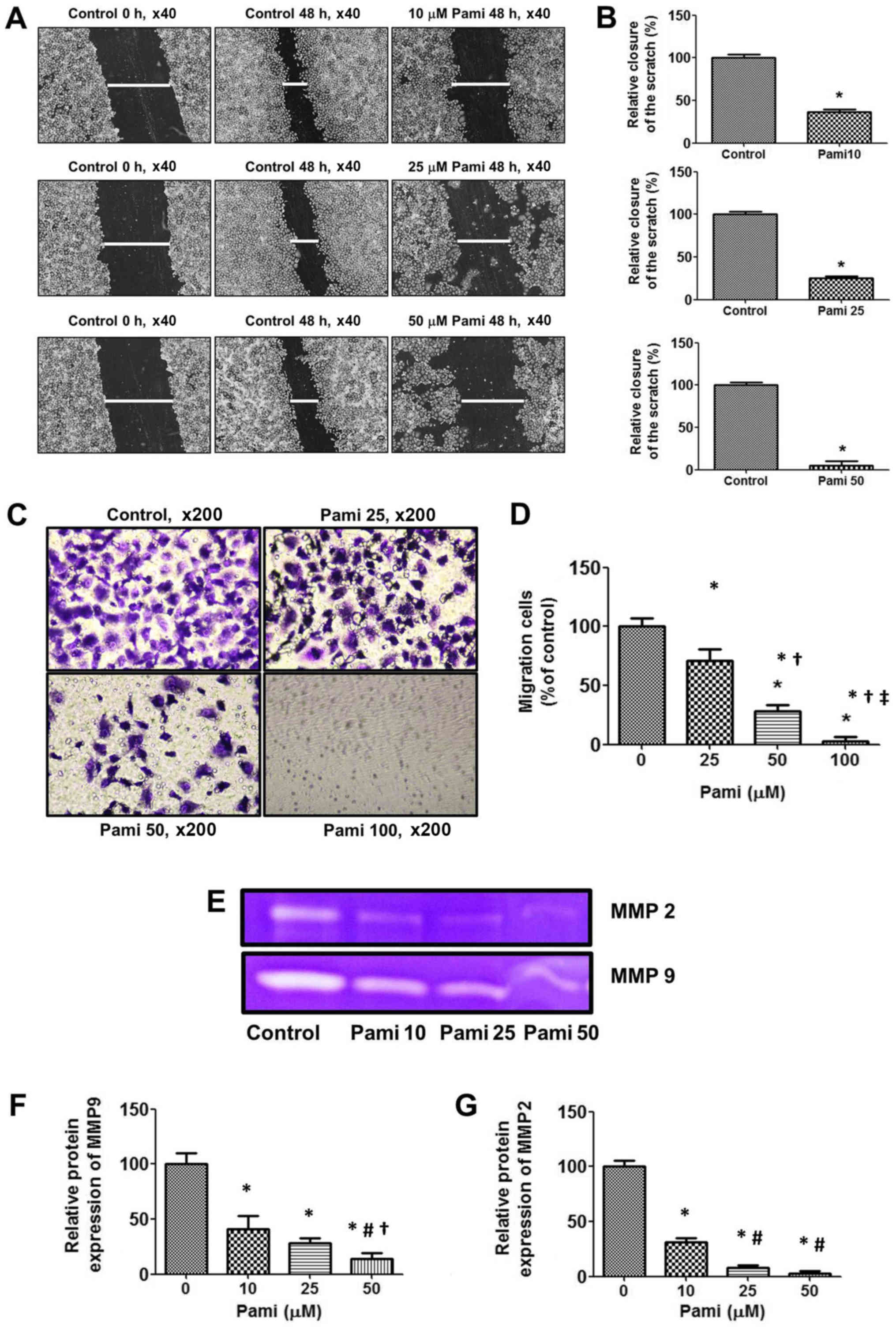|
1
|
Fleisch H: Development of bisphosphonates.
Breast Cancer Res. 4:30–34. 2002. View
Article : Google Scholar : PubMed/NCBI
|
|
2
|
Iguchi K, Tatsuda Y, Usui S and Hirano K:
Pamidronate inhibits antiapoptotic bcl-2 expression through
inhibition of the mevalonate pathway in prostate cancer PC-3 cells.
Eur J Pharmacol. 641:35–40. 2010. View Article : Google Scholar : PubMed/NCBI
|
|
3
|
Iguchi T, Miyakawa Y, Saito K, Nakabayashi
C, Nakanishi M, Saya H, Ikeda Y and Kizaki M: Zoledronate-induced S
phase arrest and apoptosis accompanied by DNA damage and activation
of the ATM/Chk1/cdc25 pathway in human osteosarcoma cells. Int J
Oncol. 31:285–291. 2007.PubMed/NCBI
|
|
4
|
Molinuevo MS, Bruzzone L and Cortizo AM:
Alendronate induces anti-migratory effects and inhibition of
neutral phosphatases in UMR106 osteosarcoma cells. Eur J Pharmacol.
562:28–33. 2007. View Article : Google Scholar : PubMed/NCBI
|
|
5
|
Zeisberger SM, Odermatt B, Marty C,
Zehnder-Fjällman AH, Ballmer-Hofer K and Schwendener RA:
Clodronate-liposome-mediated depletion of tumour-associated
macrophages: A new and highly effective antiangiogenic therapy
approach. Br J Cancer. 95:272–281. 2006. View Article : Google Scholar : PubMed/NCBI
|
|
6
|
Gnant M, Mlineritsch B, Schippinger W,
Luschin-Ebengreuth G, Pöstlberger S, Menzel C, Jakesz R, Seifert M,
Hubalek M, Bjelic-Radisic V, et al: Endocrine therapy plus
zoledronic acid in premenopausal breast cancer. N Engl J Med.
360:679–691. 2009. View Article : Google Scholar : PubMed/NCBI
|
|
7
|
Asahi H, Mizokami A, Maeda Y, Komatsu K,
Koshida K and Namiki M: Bisphosphonate therapy for hormone
refractory prostate cancer with bone metastasis. J Urol.
169:281–282. 2003. View Article : Google Scholar : PubMed/NCBI
|
|
8
|
Smith MR, McGovern FJ, Zietman AL, Fallon
MA, Hayden DL, Schoenfeld DA, Kantoff PW and Finkelstein JS:
Pamidronate to prevent bone loss during androgen-deprivation
therapy for prostate cancer. N Engl J Med. 345:948–955. 2001.
View Article : Google Scholar : PubMed/NCBI
|
|
9
|
Boissier S, Ferreras M, Peyruchaud O,
Magnetto S, Ebetino FH, Colombel M, Delmas P, Delaissé JM and
Clézardin P: Bisphosphonates inhibit breast and prostate carcinoma
cell invasion, an early event in the formation of bone metastases.
Cancer Res. 60:2949–2954. 2000.PubMed/NCBI
|
|
10
|
Iguchi K, Matsunaga S, Nakano T, Usui S
and Hirano K: Inhibition of caveolin-1 expression by incadronate in
PC-3 prostate cells. Anticancer Res. 26:2977–2981. 2006.PubMed/NCBI
|
|
11
|
Nishida S, Fujii Y, Yoshioka S, Kikuichi
S, Tsubaki M and Irimajiri K: A new bisphosphonate, YM529 induces
apoptosis in HL60 cells by decreasing phosphorylation of single
survival signal ERK. Life Sci. 73:2655–2664. 2003. View Article : Google Scholar : PubMed/NCBI
|
|
12
|
Asahi H, Mizokami A, Miwa S, Keller ET,
Koshida K and Namiki M: Bisphosphonate induces apoptosis and
inhibits pro-osteoclastic gene expression in prostate cancer cells.
Int J Urol. 13:593–600. 2006. View Article : Google Scholar : PubMed/NCBI
|
|
13
|
Valenti MT, Bertoldo F, Dalle Carbonare L,
Azzarello G, Zenari S, Zanatta M, Balducci E, Vinante O and Lo
Cascio V: The effect of bisphosphonates on gene expression: GAPDH
as a housekeeping or a new target gene? BMC Cancer. 6:492006.
View Article : Google Scholar : PubMed/NCBI
|
|
14
|
Oades GM, Senaratne SG, Clarke IA, Kirby
RS and Colston KW: Nitrogen containing bisphosphonates induce
apoptosis and inhibit the mevalonate pathway, impairing Ras
membrane localization in prostate cancer cells. J Urol.
170:246–252. 2003. View Article : Google Scholar : PubMed/NCBI
|
|
15
|
Virtanen SS, Väänänen HK, Härkönen PL and
Lakkakorpi PT: Alendronate inhibits invasion of PC-3 prostate
cancer cells by affecting the mevalonate pathway. Cancer Res.
62:2708–2714. 2002.PubMed/NCBI
|
|
16
|
Walker K and Olson MF: Targeting Ras and
Rho GTPases as opportunities for cancer therapeutics. Curr Opin
Genet Dev. 15:62–68. 2005. View Article : Google Scholar : PubMed/NCBI
|
|
17
|
Zhang PL, Lun M, Siegelmann-Danieli N,
Blasick TM and Brown RE: Pamidronate resistance and associated low
ras levels in breast cancer cells: A role for combinatorial
therapy. Ann Clin Lab Sci. 34:263–270. 2004.PubMed/NCBI
|
|
18
|
Sripa B, Brindley PJ, Mulvenna J, Laha T,
Smout MJ, Mairiang E, Bethony JM and Loukas A: The tumorigenic
liver fluke Opisthorchis viverrini-multiple pathways to
cancer. Trends Parasitol. 28:395–407. 2012. View Article : Google Scholar : PubMed/NCBI
|
|
19
|
Sookprasert A, Chindaprasert J and
Wirasorn K: Systemic therapy for locally advanced and metastatic
cholangiocarcinoma. Asian Pac J Cancer Prev. (Suppl 13):3–6.
2012.PubMed/NCBI
|
|
20
|
Buranrat B, Mairuae N and Kanchanarach W:
Cytotoxic and antimigratory effects of Cratoxy formosum extract
against HepG2 liver cancer cells. Biomed Rep. 6:441–448. 2017.
View Article : Google Scholar : PubMed/NCBI
|
|
21
|
Klungsaeng S, Kukongviriyapan V, Prawan A,
Kongpetch S and Senggunprai L: Cucurbitacin B induces
mitochondrial-mediated apoptosis pathway in cholangiocarcinoma
cells via suppressing focal adhesion kinase signaling. Naunyn
Schmiedebergs Arch Pharmacol. 392:271–278. 2019. View Article : Google Scholar : PubMed/NCBI
|
|
22
|
Chen H, Wang C, Qi M, Ge L, Tian Z, Li J,
Zhang M, Wang M, Huang L and Tang X: Anti-tumor effect of
Rhaponticum uniflorum ethyl acetate extract by regulation of
peroxiredoxin1 and epithelial-to-mesenchymal transition in oral
cancer. Front Pharmacol. 8:8702017. View Article : Google Scholar : PubMed/NCBI
|
|
23
|
Buranrat B, Mairuae N and Konsue A:
Cratoxy formosum leaf extract inhibits proliferation and migration
of human breast cancer MCF-7 cells. Biomed Pharmacother. 90:77–84.
2017. View Article : Google Scholar : PubMed/NCBI
|
|
24
|
Livak KJ and Schmittgen TD: Analysis of
relative gene expression data using real-time quantitative PCR and
the 2(-Delta Delta C(T)) method. Methods. 25:402–408. 2001.
View Article : Google Scholar : PubMed/NCBI
|
|
25
|
Bosco EE, Mulloy JC and Zheng Y: Rac1
GTPase: A ‘Rac’ of all trades. Cell Mol Life Sci. 66:370–374. 2009.
View Article : Google Scholar : PubMed/NCBI
|
|
26
|
Yoshida T, Zhang Y, Rivera Rosado LA, Chen
J, Khan T, Moon SY and Zhang B: Blockade of Rac1 activity induces
G1 cell cycle arrest or apoptosis in breast cancer cells through
downregulation of cyclin D1, survivin, and X-linked inhibitor of
apoptosis protein. Mol Cancer Ther. 9:1657–1668. 2010. View Article : Google Scholar : PubMed/NCBI
|
|
27
|
Miller T, Yang F, Wise CE, Meng F,
Priester S, Munshi MK, Guerrier M, Dostal DE and Glaser SS:
Simvastatin stimulates apoptosis in cholangiocarcinoma by
inhibition of Rac1 activity. Dig Liver Dis. 43:395–403. 2011.
View Article : Google Scholar : PubMed/NCBI
|
|
28
|
Kamigaki M, Sasaki T, Serikawa M, Inoue M,
Kobayashi K, Itsuki H, Minami T, Yukutake M, Okazaki A, Ishigaki T,
et al: Statins induce apoptosis and inhibit proliferation in
cholangiocarcinoma cells. Int J Oncol. 39:561–568. 2011.PubMed/NCBI
|
|
29
|
Riebeling C, Forsea AM, Raisova M, Orfanos
CE and Geilen CC: The bisphosphonate pamidronate induces apoptosis
in human melanoma cells in vitro. Br J Cancer. 87:366–371. 2002.
View Article : Google Scholar : PubMed/NCBI
|
|
30
|
Wada A, Fukui K, Sawai Y, Imanaka K, Kiso
S, Tamura S, Shimomura I and Hayashi N: Pamidronate induced
anti-proliferative, apoptotic, and anti-migratory effects in
hepatocellular carcinoma. J Hepatol. 44:142–150. 2006. View Article : Google Scholar : PubMed/NCBI
|
|
31
|
Lai TJ, Hsu SF, Li TM, Hsu HC, Lin JG, Hsu
CJ, Chou MC, Lee MC, Yang SF and Fong YC: Alendronate inhibits cell
invasion and MMP-2 secretion in human chondrosarcoma cell line.
Acta Pharmacol Sin. 28:1231–1235. 2007. View Article : Google Scholar : PubMed/NCBI
|
|
32
|
Heikkilä P, Teronen O, Moilanen M,
Konttinen YT, Hanemaaijer R, Laitinen M, Maisi P, van der Pluijm G,
Bartlett JD, Salo T and Sorsa T: Bisphosphonates inhibit
stromelysin-1 (MMP-3), matrix metalloelastase (MMP-12),
collagenase-3 (MMP-13) and enamelysin (MMP-20), but not
urokinase-type plasminogen activator, and diminish invasion and
migration of human malignant and endothelial cell lines. Anticancer
Drugs. 13:245–254. 2002. View Article : Google Scholar : PubMed/NCBI
|
|
33
|
Ponce-Cusi R and Calaf GM: Antitumor
activity of pamidronate in breast cancer cells transformed by low
doses of α-particles and estrogen in vitro. Int J Oncol.
46:2663–2669. 2015. View Article : Google Scholar : PubMed/NCBI
|
|
34
|
Issat T, Nowis D, Legat M, Makowski M,
Klejman MP, Urbanski J, Skierski J, Koronkiewicz M, Stoklosa T,
Brzezinska A, et al: Potentiated antitumor effects of the
combination treatment with statins and pamidronate in vitro and in
vivo. Int J Oncol. 30:1413–1425. 2007.PubMed/NCBI
|


















